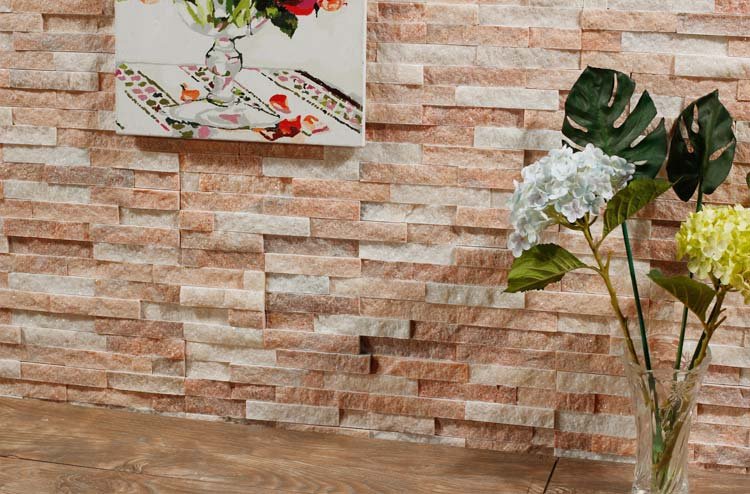Exterior stacked stone is a stunning choice for enhancing the architectural appeal of homes, providing a rustic yet elegant look. This versatile material is widely used in various applications, from accent walls to complete facades. However, over time, the natural beauty of exterior stacked stone can fade due to environmental factors, requiring homeowners to consider repainting or staining to maintain its aesthetic and protective qualities. In this guide, we’ll explore how to paint exterior stacked stone, delving into the reasons for painting, preparation steps, paint selection, techniques, and maintenance tips.
Painting exterior stacked stone can transform the look of your home, offering a fresh perspective without the need for a complete renovation. As we move forward, we’ll cover everything you need to know to achieve a professional finish while ensuring the longevity of your exterior stacked stone veneer panels.
1. Reasons to Paint Stacked Stone
1.1 Enhancing Aesthetic Appeal
One of the primary motivations for painting exterior stacked stone is to enhance its aesthetic appeal. The natural color of stone can sometimes clash with modern design preferences or the surrounding landscape. By selecting a new color, homeowners can breathe new life into their exteriors. Color options range from neutral tones to bold, vibrant hues, allowing for creative expression.
For instance, lighter shades can create a bright, airy feel, while darker colors can add drama and sophistication. Additionally, painting allows coordination with the home’s overall color scheme, including trim, doors, and windows, leading to a cohesive design.
1.2 Protecting the Exterior Stacked Stone
In addition to visual enhancement, painting is a protective layer for exterior stacked stone panels. The elements can take a toll on natural stone surfaces, leading to erosion, discoloration, and even structural damage. Quality paint provides a barrier against moisture, UV rays, and temperature fluctuations, prolonging the life of your stone.
According to a study from the National Center for Preservation Technology and Training, painted surfaces can reduce moisture absorption by up to 75%, significantly mitigating the risks of mold and mildew. Thus, painting not only beautifies but also fortifies the stone against environmental stressors.
1.3 Updating the Look
Painting can dramatically update the look of your home without extensive renovations. If you’ve recently changed the landscaping or added new architectural features, repainting your exterior stacked stone can help create harmony within the overall design. Furthermore, it allows homeowners to keep pace with design trends, making it easy to refresh the home’s appearance over the years.
In essence, painting your exterior stacked stone is a simple yet effective way to modernize and enhance your home’s curb appeal, ensuring it remains a standout feature in your neighborhood.
-
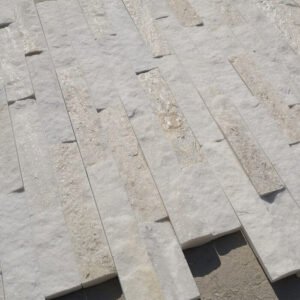 China new colors quartzite stacked stone panels
China new colors quartzite stacked stone panels -
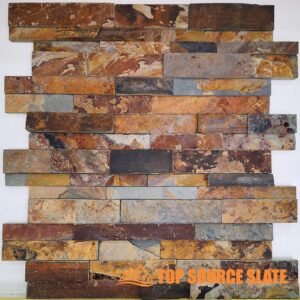 Rough rusty slate stacked stone ledger panel 6 in. x 24 in.
Rough rusty slate stacked stone ledger panel 6 in. x 24 in. -
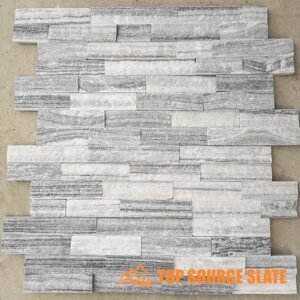 Rough alaska grey stacked stone ledger panel 6 in. x 24 in.
Rough alaska grey stacked stone ledger panel 6 in. x 24 in. -
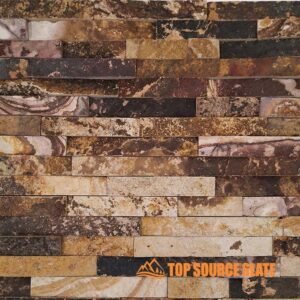 Rough sandstone stacked stone ledger panel 6 in. x 24 in.
Rough sandstone stacked stone ledger panel 6 in. x 24 in. -
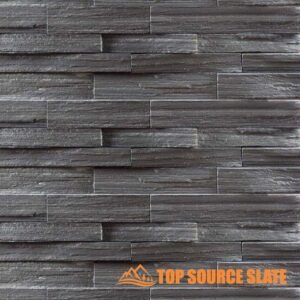 Natural black slate rough ledger panel 6 in. x 24 in.
Natural black slate rough ledger panel 6 in. x 24 in. -
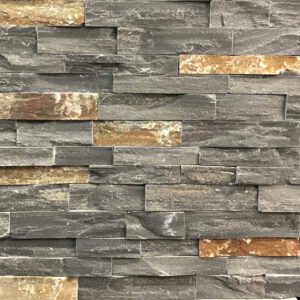 Sierra Blue Ledger Panel 6 in. x 24 in. Natural Stone Quartzite
Sierra Blue Ledger Panel 6 in. x 24 in. Natural Stone Quartzite -
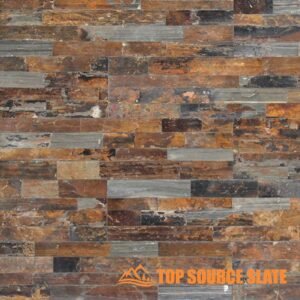 California gold slate natural ledge stone panels- 6 x 24
California gold slate natural ledge stone panels- 6 x 24 -
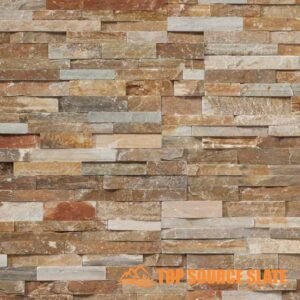 Golden harvest slate panel ledger – 6 x 24
Golden harvest slate panel ledger – 6 x 24
-
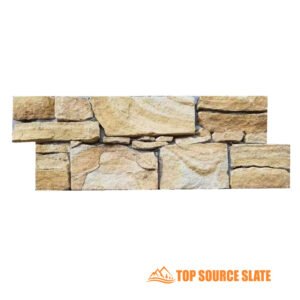 New style exterior natural Z stone wall cladding
New style exterior natural Z stone wall cladding -
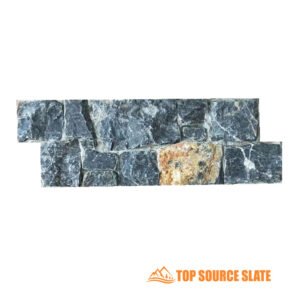 New style exterior natural Z stone cladding
New style exterior natural Z stone cladding -
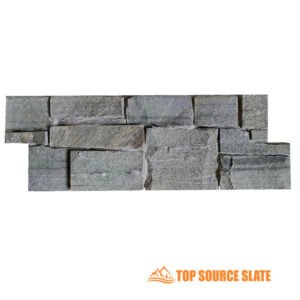 Wholesale price exterior natural stone panels
Wholesale price exterior natural stone panels -
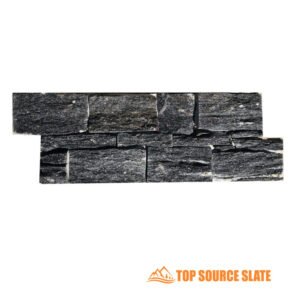 Black quartz stacked stone fireplace
Black quartz stacked stone fireplace -
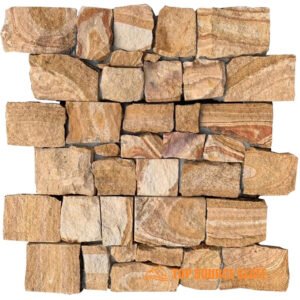 Factory price sandstone z panel stone wall cladding
Factory price sandstone z panel stone wall cladding -
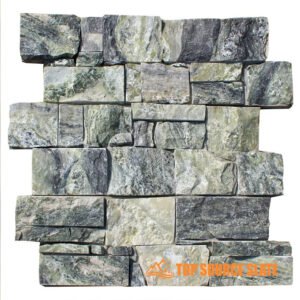 Factory price interlocking Z stone cladding panels
Factory price interlocking Z stone cladding panels -
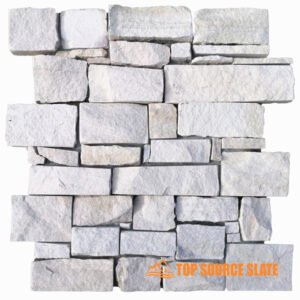 White sandstone stacked stone fireplace
White sandstone stacked stone fireplace -
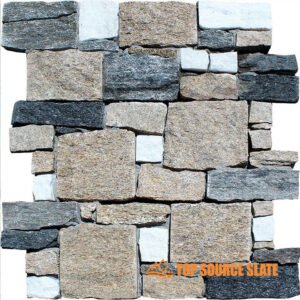 Exterior decoration cultured stone ledgestone
Exterior decoration cultured stone ledgestone
-
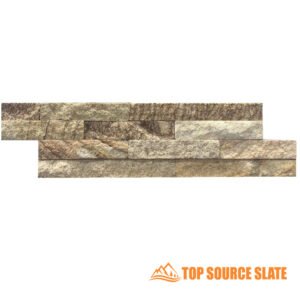 Best quality sandstone 3D split faced tiles for interior and exterior
Best quality sandstone 3D split faced tiles for interior and exterior -
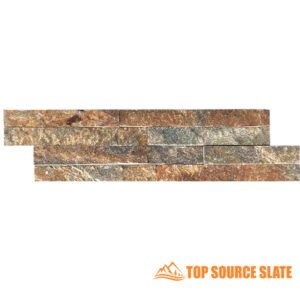 Wholesale price rustic copper quartz splitface mosaic tile
Wholesale price rustic copper quartz splitface mosaic tile -
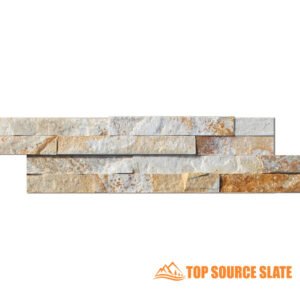 High quality Chinese sparkle split face mosaic tiles oyster
High quality Chinese sparkle split face mosaic tiles oyster -
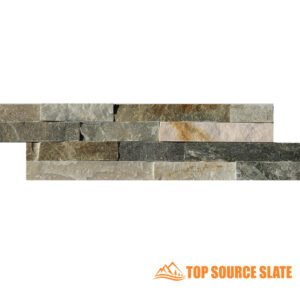 China manufacture oyster riven split face quartzite mosaic tiles
China manufacture oyster riven split face quartzite mosaic tiles -
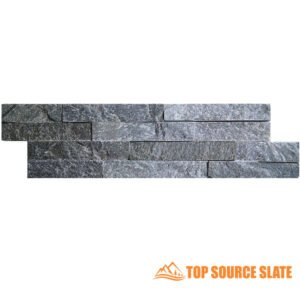 Professional manufacture rotia grey brick split face mosaic tile 10*36cm
Professional manufacture rotia grey brick split face mosaic tile 10*36cm -
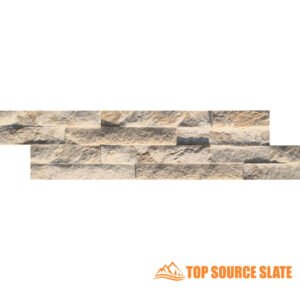 China factory royal white split face ledger panel
China factory royal white split face ledger panel -
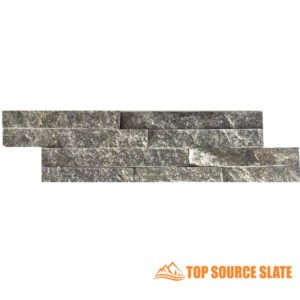 China factory green quartzite split face mosaic wall tiles
China factory green quartzite split face mosaic wall tiles -
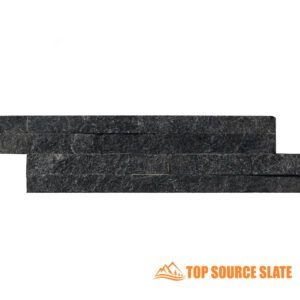 China manufacturer black quartzite mini splitface tile
China manufacturer black quartzite mini splitface tile
Stacked Stone: A Complete Buyer’s Guide【update】
How to Install Stacked Stone or Ledge Stone
How to Install a Stacked Stone Fireplace
Natural stone cladding: The Complete Guide
2. Preparing for the Project
2.1 Assessing the Condition of Exterior Stacked Stone
Before diving into the painting process, assessing the condition of your exterior stacked stone is essential. Take a close look for any signs of damage, such as cracks, chips, or crumbling mortar. Addressing these issues beforehand will enhance your project’s appearance and ensure a longer-lasting paint job.
If you find significant damage, consider consulting a professional for repairs. This step is crucial; neglecting to fix underlying problems can lead to poor paint adhesion and even more extensive damage in the future.
2.2 Cleaning the Exterior Stacked Stone Veneer Surface
A thorough cleaning of the stone surface is a non-negotiable step in preparation. Dirt, grime, and mildew can inhibit paint adhesion and lead to uneven finishes. Here are some effective cleaning methods:
- Pressure Washing: Using a pressure washer can efficiently remove stubborn dirt and debris. Ensure that the pressure is set appropriately to avoid damaging the exterior stacked stone veneer panels.
- Scrubbing: For smaller areas or delicate stone, a scrub brush with a mixture of water and mild detergent can work wonders. Pay attention to crevices where dirt tends to accumulate.
After cleaning, allow the stone to dry completely, as painting over damp surfaces can cause bubbling and peeling.
2.3 Repairing Damages
If you’ve identified any cracks or chips during your assessment, it’s crucial to repair them before painting. Here are some common methods for repairs:
- Mortar Repair: Use a mortar patching compound for cracks in the mortar joints. Clean out the joint, apply the compound, and smooth it over with a trowel.
- Stone Filler: A stone filler can be applied to minor chips in the stone. Follow the manufacturer’s instructions for application and drying times.
By taking the time to prepare your exterior stacked stone tile properly, you set the stage for a successful painting project that will look good and last longer.
3. Choosing the Right Paint
3.1 Types of Paint Suitable for Exterior Stacked Stone
Selecting the right paint is crucial for achieving a durable and aesthetically pleasing finish on your exterior stacked stone. Two main types of paint are typically recommended for stone surfaces:
- Acrylic Paint: Known for its flexibility and durability, acrylic paint is an excellent choice for exterior applications. It adheres well to exterior stacked stone veneer panels, resists fading, and provides excellent coverage. Additionally, it allows the stone to breathe, reducing the risk of moisture buildup underneath the paint.
- Latex Paint: Another viable option, latex paint is water-based and easy to work with. It dries quickly, has low VOC emissions, and is easier to clean up than oil-based paints. Look for high-quality latex paints specifically formulated for outdoor use.
When choosing paint, make sure it’s labeled for masonry or exterior stacked stone to ensure it can withstand the outdoor elements effectively.
3.2 Color Selection
Choosing the right color for your exterior stacked stone can significantly impact the overall look of your home. Here are some tips to guide your decision:
- Consider Surroundings: Take into account the colors of your home’s siding, roof, and landscape. A cohesive color palette will create harmony in your exterior design.
- Test Samples: Always sample a few colors on the stone surface before committing. Paint can look different when applied, influenced by lighting conditions and the natural color of the exterior stacked stone wall.
- Trends vs. Timelessness: While it’s tempting to choose trendy colors, consider opting for more timeless shades if you plan to stay in your home long-term. Neutral tones like grays, beiges, and whites often provide a classic look.
Ultimately, the right paint color not only enhances your home’s curb appeal but also contributes to its value and longevity.
4. Tools and Materials Needed
4.1 Essential Tools
Having the right tools on hand is crucial for a successful painting project. Here’s a list of essential tools you’ll need when painting exterior stacked stone:
- Brushes: A variety of brushes (both synthetic and natural bristle) are essential. Use stiff-bristle brushes for textured surfaces and finer brushes for detailed areas.
- Rollers: A roller with a thick nap is ideal for covering larger areas quickly. For detailed work, a smaller roller can be used.
- Spray Equipment (Optional): For a smooth and even finish, consider using a paint sprayer, especially for larger surfaces. Ensure you have proper protective gear when using a sprayer.
- Drop Cloths and Tape: Protect adjacent surfaces by laying down drop cloths and using painter’s tape to mask off areas that you don’t want to paint.
4.2 Safety Equipment
Safety should always be a priority when undertaking a painting project. Here are some recommended safety gear:
- Gloves: Use disposable or reusable gloves to protect your hands from paint and chemicals.
- Masks: A mask is essential, especially when working with spray paint or in poorly ventilated areas. Choose a mask rated for paint fumes.
- Safety Goggles: Protect your eyes from splashes and debris, especially when pressure washing or using tools.
- Knee Pads: If you’ll be working at ground level for extended periods, knee pads can help reduce discomfort.
By ensuring you have all the necessary tools and safety equipment, you set yourself up for a smoother and safer painting experience.
Installation Guidelines for Stacked Stone Tile
How to Measure for Stacked Stone Veneer Panels
How To Select Stacked Stone Tiles For Your Project
5. Painting Techniques
When painting exterior stacked stone, the technique you use can dramatically affect the overall finish and durability of your project. This section provides an in-depth guide to ensure professional results with long-lasting effects.
5.1 Applying Primer
Using a high-quality primer is an essential first step in ensuring the paint adheres properly and lasts on exterior stacked stone cladding. Priming creates a uniform base, seals porous surfaces, and prevents the stone from absorbing too much paint, which can lead to uneven coverage.
- Choose the Right Primer: For exterior stacked stone, opt for an acrylic masonry primer. Acrylic primers are highly durable and flexible, allowing them to adapt to the stone’s texture while preventing cracking or peeling over time. If your stone is particularly porous or has never been painted, consider a high-bonding primer for extra adherence.
- Apply Primer Evenly:
- Start by using a paintbrush to apply primer to the edges and detailed areas. For rough stone surfaces, a stiff-bristle brush is recommended to get into the crevices.
- After covering the detailed areas, use a roller or sprayer for larger sections. A thick nap roller works best on textured surfaces like stacked stone.
- Ensure you cover every nook and cranny, as uneven priming can lead to blotchy paint application. A single, even coat is typically sufficient.
- Allow Sufficient Drying Time: Let the primer dry completely before moving on to painting. This usually takes about 24 hours, depending on weather conditions. Rushing this step can cause paint to bubble or peel.
- Optional Step – Sanding: For a smoother finish, lightly sand the surface with fine-grit sandpaper after the primer has dried. This will remove any primer buildup in raised areas and ensure a more even surface for the paint.
5.2 Painting Process
After the primer has dried, it’s time to move on to the actual painting process. The method you choose to apply the paint—whether by brush, roller, or spray—depends on the size and texture of your exterior stacked stone. Here’s a detailed breakdown:
Stir the Paint Thoroughly:
- Before you begin, make sure your paint is mixed evenly. Stir the paint thoroughly to ensure consistency in color and texture.
Start with the Edges and Details:
- Use a brush to paint the edges of the exterior stacked stone veneer, focusing on corners, crevices, and intricate details. A brush offers better control for these areas compared to a roller or sprayer.
Roller for Large Surfaces:
- For larger areas, use a thick-nap roller to cover the surface efficiently. The nap (the thickness of the roller cover) should be at least ¾ inch or more, depending on the depth of the stone texture. This ensures the paint penetrates the crevices of the exterior stacked stone.
- Roll in small sections, using long, even strokes to avoid lap marks. Feather the edges by rolling slightly over the previously painted areas to create a seamless blend.
Spray Painting (Optional):
- If you’re covering a large area, using a paint sprayer can save time and provide an even, professional finish. Sprayers are especially effective for highly textured exterior stacked stone panels, as they can penetrate small cracks and crevices.
- However, spraying requires more preparation, as you’ll need to mask off surrounding areas with drop cloths and painter’s tape to prevent overspray.
Safety is key:
- When using a sprayer, always wear a mask and goggles to protect yourself from paint fumes and overspray.
Multiple Thin Coats:
- For the best results, apply multiple thin coats rather than one thick layer. This technique provides better coverage, minimizes drips, and ensures the paint adheres properly to exterior stacked stone surface. Allow each coat to dry thoroughly before applying the next.
- Tip: When applying the second coat, use a criss-cross technique, painting in one direction for the first coat and the opposite direction for the second. This ensures even coverage and helps to avoid streaks or uneven texture.
Inspect and Touch Up:
- After the final coat is dry, inspect the painted surface for any missed spots, drips, or uneven areas. Use a small brush to touch up these areas for a flawless finish.
5.3 Techniques for a Professional Finish
Achieving a professional-looking finish involves using advanced techniques that ensure even coverage and a polished result. Here are some methods that can take your project to the next level:
Use the Right Nap Roller:
- For rough or highly textured stone surfaces, choose a thick nap roller (1-1.25 inches). The thicker nap will allow the roller to reach deep into the crevices of exterior stacked stone.
- If the surface is smoother, a shorter nap roller (½ inch) can be used to achieve a sleek finish.
Feathering the Edges:
- Feathering is a technique where you blend the edges of each section as you paint. This ensures there are no harsh lines or lap marks where one painted area meets another. For example, if you’re rolling paint on one section, lightly roll the edges into the adjoining area to create a seamless transition.
Don’t Overwork the Paint:
- Over-brushing or over-rolling the paint can lead to streaks, brush marks, and an uneven texture. Apply the paint in smooth, even strokes, and avoid going over the same area multiple times once the paint begins to dry. This is particularly important with textured surfaces like exterior stacked stone, where overworking the paint can cause it to accumulate unevenly in the crevices.
Drying Time Between Coats:
- Allow at least 4-6 hours of drying time between coats for water-based paints. For oil-based paints, it’s best to wait 24 hours. This prevents the undercoat from lifting and ensures each layer adheres properly.
- In cooler or more humid climates, drying times may be extended. Be patient, as proper drying ensures the longevity of the paint.
Backrolling (For Sprayers):
- If you’re using a sprayer, consider backrolling. This is a technique where, after spraying a section, you use a roller to go over the wet paint. This method helps push the paint into exterior stacked stone crevices and ensures even coverage.
Using a Sealer (Optional):
- For extra protection and longevity, consider applying a clear masonry sealer after the paint has dried. This not only enhances the color of the painted stone but also protects it from the elements, such as rain, sun exposure, and dirt accumulation.
- Choose a UV-resistant, breathable sealer designed for exterior masonry. Apply it with a brush or roller following the same techniques used for painting.
5.4 Special Considerations for Exterior Stacked Stone Veneer
Exterior stacked stone tile often comes with unique challenges because of its uneven surface and porous nature. Here are some additional considerations specific to this material:
- Porosity of the Stone: Highly porous stones, such as limestone or sandstone, may require additional coats of primer or paint to prevent the stone from absorbing too much of the product. Always test a small area first to gauge how the stone reacts.
- Natural Texture and Grooves: Because of its rugged texture, stacked stone tiles tend to have grooves and uneven areas that can be missed during painting. To combat this, make sure you change your viewing angle as you paint, ensuring no areas are left uncovered.
By following these comprehensive painting techniques, you’ll ensure your exterior stacked stone looks professionally finished and is well-protected against the elements for years to come.
How to clean interior stacked stone?
How to cut ledger stone panels?
How to remove exterior stone cladding
6. Maintenance After Painting
6.1 Inspecting the Paint
After painting your exterior stacked stone, regular maintenance is essential to preserve its appearance and durability. Start by inspecting the painted surface periodically, particularly after harsh weather conditions. Look for any signs of wear, such as:
- Peeling or Cracking: These issues can indicate poor adhesion or damage to the underlying stone.
- Discoloration: Fading paint can result from prolonged sun exposure.
- Mildew or Mold Growth: Check for any dark spots, especially in damp areas.
Addressing these issues promptly can prevent more significant damage and prolong the life of your paint job.
6.2 Touch-Up Tips
To keep your painted exterior stacked stone looking fresh, touch-ups may be necessary. Here’s how to manage minor repairs effectively:
- Identify Problem Areas: After inspection, mark any spots that need attention.
- Clean the Area: Before touching up, clean the affected areas with mild detergent and water to remove dirt or mildew.
- Use the Same Paint: For touch-ups, always use the same paint and color that you applied initially. If the paint has been exposed to sunlight for an extended period, consider bringing a sample to the store to match the color accurately.
- Application Method: Use a small brush for precision, blending the new paint into the existing surface for a seamless appearance.
Maintaining your exterior stacked stone panels not only keeps it looking great but also helps protect your investment over time.
7. Common Mistakes to Avoid
7.1 Skipping Preparation
One of the most significant mistakes homeowners make is skipping essential preparation steps. Proper preparation, including cleaning and repairing exterior stacked stone, is crucial for achieving a durable and attractive finish. Without it, paint can flake, peel, or chip, leading to costly repairs and the need for a complete repaint sooner than anticipated.
7.2 Using Incompatible Products
Another common error is using the wrong type of paint or primer. Not all paints are suitable for masonry or stone, and using incompatible products can result in poor adhesion and premature failure. Always select paints specifically designed for exterior stacked stone, and avoid oil-based paints unless they are explicitly recommended for stone surfaces.
7.3 Ignoring Weather Conditions
Weather plays a critical role in the success of your painting project. Painting in extreme temperatures or humidity can negatively affect the application and drying processes. Ideally, choose a dry, mild day for painting, avoiding conditions like rain or direct sunlight, which can cause the paint to dry too quickly and result in an uneven finish.
7.4 Rushing the Process
Lastly, rushing through the painting process can lead to mistakes and a subpar finish. Take your time with each step, from preparation to application. Allow adequate drying time between coats, and don’t skip any necessary steps, such as priming. A rushed job often results in the need for rework, which can be both time-consuming and frustrating.
By being aware of these common pitfalls and taking the necessary precautions, you can ensure a successful painting project that enhances the beauty and longevity of your exterior stacked stone.
Key Takeaways
- Preparation is Key: Never underestimate the importance of cleaning and repairing the stone before painting. A well-prepared surface ensures better adhesion and a longer-lasting finish.
- Choose the Right Products: Select high-quality, masonry-specific primers and paints to protect and beautify your exterior stacked stone.
- Regular Maintenance: Inspect your painted surfaces regularly and perform touch-ups as needed to keep your home looking fresh.
- Avoid Common Mistakes: Be mindful of preparation, product compatibility, weather conditions, and take your time throughout the process to avoid pitfalls.
With these guidelines in hand, you can confidently undertake your exterior stacked stone painting project. Not only will you enhance the aesthetic appeal of your home, but you will also protect your investment for years to come. Whether you’re looking for a fresh look or a protective layer, painting your exterior stacked stone is a worthwhile endeavor.
8. Conclusion
Painting exterior stacked stone can be a rewarding project that enhances the beauty and longevity of your home. By understanding the reasons to paint, thoroughly preparing the surface, choosing the right materials, and applying the paint with care, you can achieve stunning results that elevate your home’s curb appeal.
Top Source Slate excels in all these areas, making us the best accomplice in your stone cladding wishes, whether you’re working on outside house stone cladding or an indoor characteristic wall. Contact us today to learn more about how we will help your next assignment.

